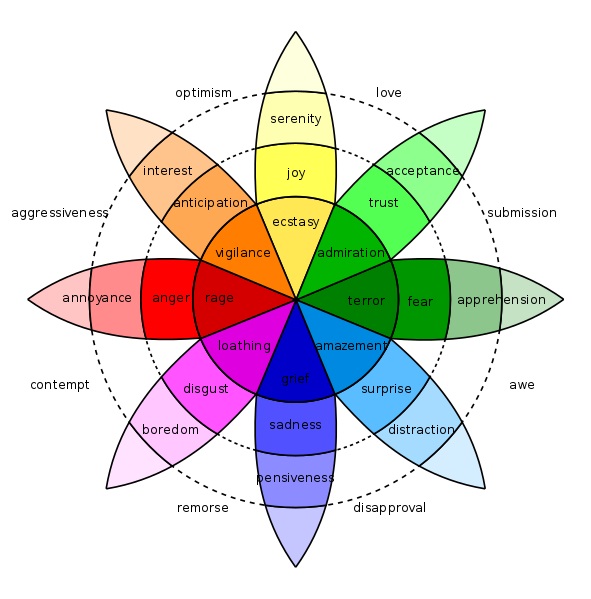How emotional connections impact marketing

Most people have the belief that they make their decisions based on a rational thought process.
This includes purchasing behaviour. We buy things because it’s the best price, the best value or the best quality.
As a result, plenty of marketing communication activities and messages are influenced by this rational thought process. Messages built from a very product or service centric point of view.
Marketing literature goes out of its way to discuss product features, advantages, and benefits. Websites, Apps and software-as-a-service products focus on providing high customer satisfaction through user experience.
Now, I am not saying that marketing communication shouldn’t feature these elements. But…
The problem is that most people’s beliefs are wrong. Our decisions are not solely based on rational thought.
Studies have shown that when we make purchasing decisions, emotions – how we feel about our choices – matter greatly.
In fact, without emotions, we’d struggle to even make decisions. Professor of neuroscience, Antonio Damasio, argued in his book Descartes’ Error, that our emotional connection to things is a necessary ingredient to almost all decisions.
Damasio’s view comes from his studies of people who have damaged the connection areas between their ‘thinking’ and ‘emotional’ areas of their brain. He discovered that whilst they were able to process rational information about different choices, they struggled to make decisions.
Why? Because they were unable to get a sense of how they felt about the options.
If a brand wants to be noticed by an audience, it is therefore imperative that the marketing messages can form an emotional connection. This is an area called emotional marketing.
Emotional marketing and advertising use emotion to build a connection with an audience. It typically taps into one single emotion like happiness, sadness, or joy to inspire a consumer response.
Why emotional marketing works
When done right, emotional marketing makes a great, first, lasting impression on people.
Imagine seeing two adverts from a new business. One talks about the product with its features and benefits. The second one makes you laugh or cry. Which one would impress you more? Which one would you remember?
Surprisingly, science backs this up. In a study that measured 1,400 successful advertising campaigns, brands that used purely emotional content performed twice as well as those with only rational content.
The crazy thing is, even when shopping for a rational product, emotional content is still more powerful than rational content. Researchers at the University of California and George Washington University decided to have a look at two types of advertising; “logical persuasion”, focusing on rational content, and “nonrational influence” which depicts content that has seemingly nothing to do with the product.
Participants were shown a series of ads that were either logical persuasion or nonrational influence. All whilst their brain patterns were measured to see which parts were stimulated.
As you would expect, when participants were shown logical persuasion adverts, the areas of the brain that relate to decision-making flared up.
Meanwhile, when shown nonrational influence, the emotional parts of their brain were simulated.
Just what you would expect right? So, all is good… Wrong.
The problem comes when the decision-making areas of your brain are flaring up. This is because, one of those decision-marking areas that is flaring up is also the behavioural inhibition part of the brain – the part of your brain that stops impulse purchasing.
This means, when you look at rational content (e.g. adverts that focus on features and benefits of a product or service), you’re actually preventing impulse purchasing behaviour.
Meanwhile, with nonrational content (e.g. adverts that don’t focus on features and benefits and are seemingly pointless), those decision areas – the behavioural inhibition area which stops impulse purchasing – are not firing.
That’s right. It is literally better, psychologically speaking, to completely ignore the features of your product or service in your advertising.
Advertising, therefore, works best when it just communicates directly with emotion.
The benefits of emotional marketing
And the benefits can easily be seen through studying that scorn of the 21st century – clickbait.
Clickbait is the art of constructing a web link – either through an image or title – which is so irresistible that you have to click on it.
Back in 2013, the New York Times wanted to see how different emotionally charged works influenced behaviour. They hired the University of Pennsylvania to look at their history of articles on social media.
What they found was both interesting and surprising.
Articles that were found to have a positive, happy spin were shared far more on social media than negative articles.
However. Negatively spun articles were found to have more clicks than positive articles.
This means that even though positive articles got more reach, people weren’t necessarily clicking on them before sharing.
So, if you are aiming to get wider brand awareness, you want to lead with ‘happy’. But if you want more engagement, you want to use a negative spin.
In 2015, researchers for the Harvard Business Review compiled the results of their work with emotional marketing.
They worked with multiple businesses in a variety of sectors to examine how emotional marketing can impact consumer behaviour.
Every sector they worked with, from major banks to household cleaning products, all saw growth by utilising emotional marketing.
A major bank saw new accounts grow by 70%. A household cleaning company doubled its market share. A national clothing retailer saw in-store growth accelerate three-fold.
As part of their review, they identified hundreds of emotional motivators that can be used to influence consumer behaviour.
Most brands and consumers fall within the top 10, which are:
| I am inspired by a desire to: | Brands can leverage this motivator by helping customers: |
| Stand out from the crowd | Project a unique social identity; be seen as special |
| Have confidence in the future | Perceive the future as better than the past; have a positive mental picture of what’s to come |
| Enjoy a sense of well-being | Feel that life measures up to expectations and that balance has been achieved; seek a stress-free state without conflicts or threats |
| Feel a sense of freedom | Act independently, without obligations or restrictions |
| Feel a sense of thrill | Experience visceral, overwhelming pleasure and excitement; participate in exciting, fun events |
| Feel a sense of belonging | Have an affiliation with people they relate to or aspire to be like; feel part of a group |
| Protect the environment | Sustain the belief that the environment is sacred; take action to improve their surroundings |
| Be the person I want to be | Fulfill a desire for ongoing self-improvement; live up to their ideal self-image |
| Feel secure | Believe that what they have today will be there tomorrow; pursue goals and dreams without worry |
| Succeed in life | Feel that they lead meaningful lives; find worth that goes beyond financial or socioeconomic measures |
Source: Harvard Business Review
How to use emotional marketing
For emotional marketing to work, you need to know two things:
- Your brand tone of voice
- Your target audience
With your brand’s tone of voice known, you’re able to develop marketing communications that gives your brand a consistent personality. Remember, you want to try and focus on one single emotion. This keeps things simple and consistent across your activities.
Meanwhile, knowing your audience is vital. What are their desires?
And once you can identify their desires, which emotion works best to leverage that in the consumer?
Psychologist Robert Plutchik created a useful tool call the “wheel of emotions” based around 8 basic emotions: joy, trust, fear, surprise, sadness, anticipation, anger, and disgust.

The wheel of emotions can be used not just to identify a basic emotion, but to give your emotional marketing more focus.
Knowing these two points, your tone of voice and target audience, can then allow you to start distinguishing how your emotional marketing campaigns will feel and stand out from competitors.
——-
Emotional marketing is a powerful tool. And, as discussed earlier, it can feel counter-intuitive by pulling away from the more rational and traditional “feature, advantages, benefits” model of marketing.
But the results speak for themselves. Emotional marketing works. It is incredibly powerful and, when done right, can form lifelong emotional connections between consumer and brand.
Ready to get started?
Our team of creatives work together in a wide range of disciplines, meaning we’re able to craft beautifully bespoke creative that will produce results you’ll love!


